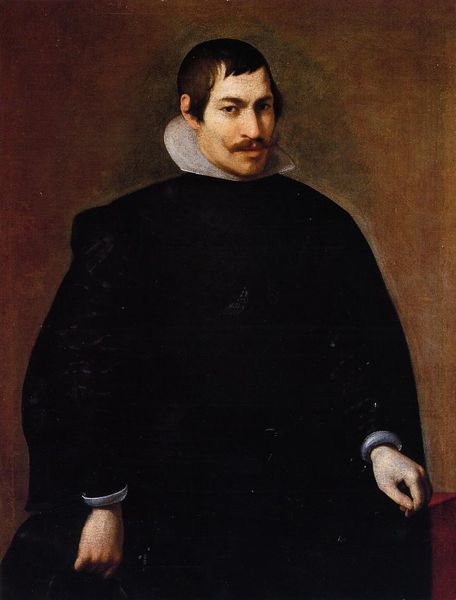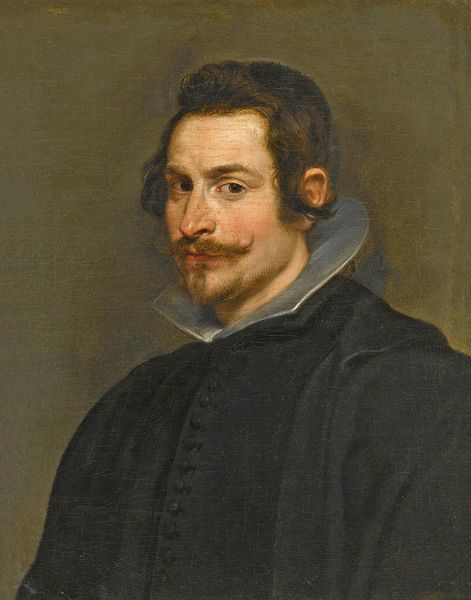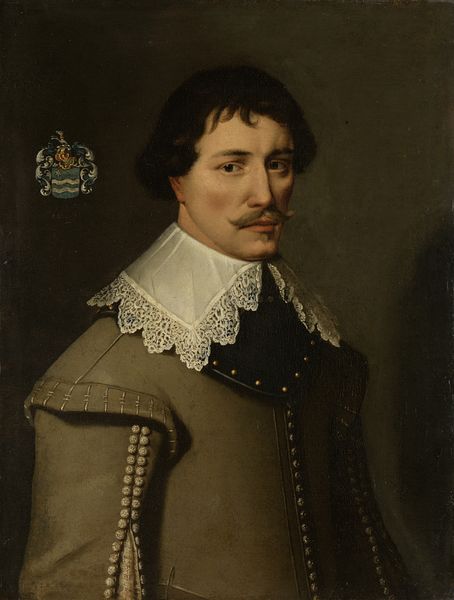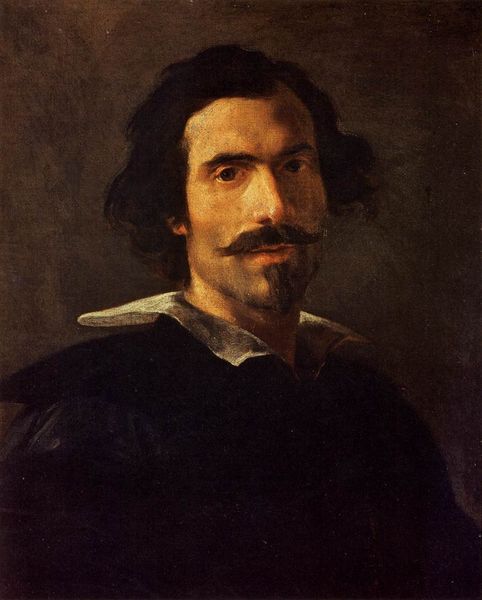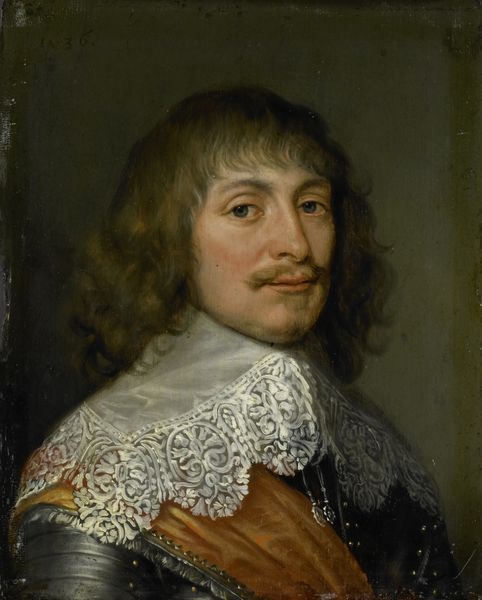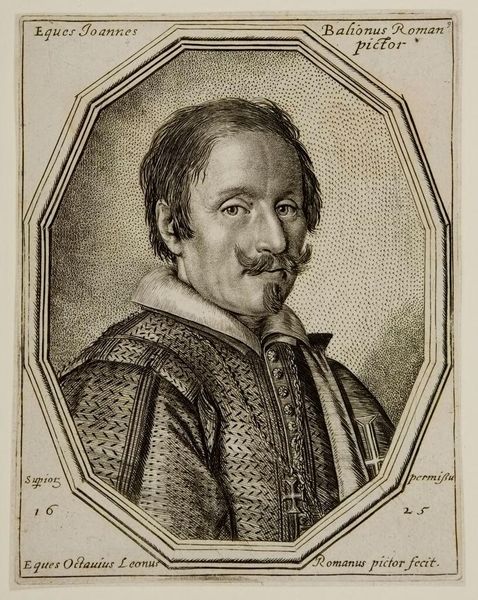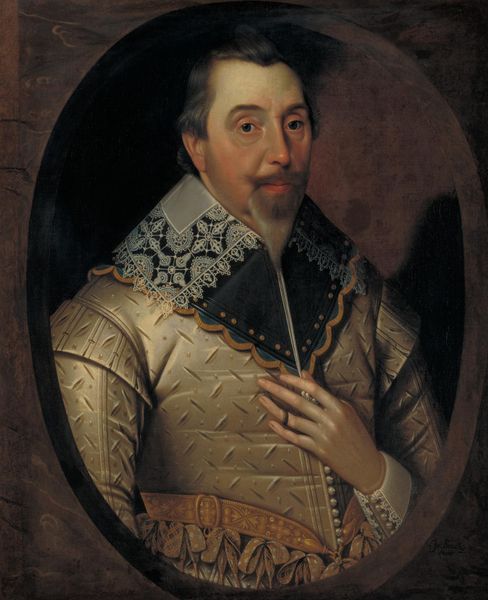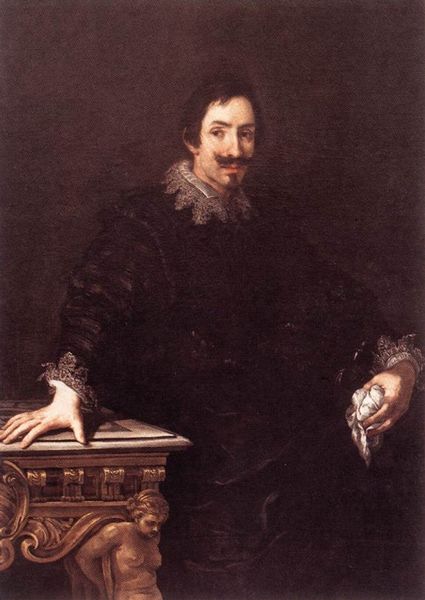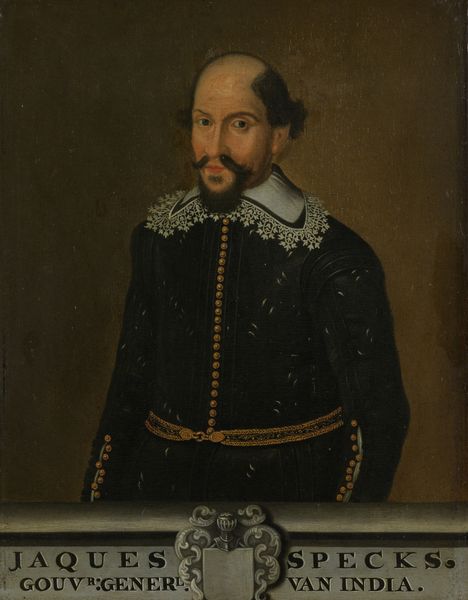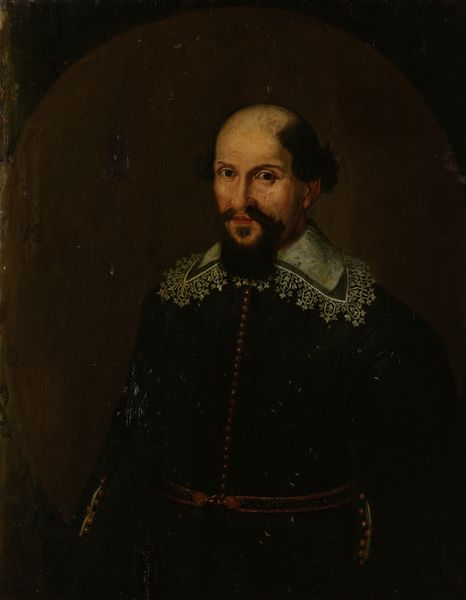
painting, oil-paint
#
portrait
#
baroque
#
painting
#
oil-paint
#
history-painting
#
italian-renaissance
Copyright: Public domain
Editor: Diego Velázquez's "Francisco Bandres de Abarca," painted in 1646 using oil paint, presents this figure with such seriousness. The dark clothing and that bright white collar create a real visual contrast. I wonder, what’s your take on its significance within the context of its time? Curator: It’s fascinating how Velázquez positions this individual, right? Consider the politics of portraiture then. This wasn't just about capturing a likeness; it was about constructing an image of power and status, carefully curated for public consumption. The starkness, the gentleman’s attire, what do those elements tell you about the social role this man likely occupied? Editor: They suggest someone of high social standing, someone wanting to project authority… almost like a symbol. Curator: Precisely. Notice the coat of arms, too. It anchors his identity, connecting him to a specific lineage and place within the existing societal structures. These paintings served a function, legitimizing their status and reinforcing a visual hierarchy. What are your thoughts on how art shaped power dynamics back then? Editor: I guess art wasn’t just art then; it was deeply embedded in social strategies, a political tool. It's really eye-opening to see a portrait this way! Curator: Absolutely. Understanding the function of such works lets us view them as more than just aesthetics; instead they offer insight into how image and power are so cleverly interwoven. Editor: This has totally reshaped how I look at these older portraits, it makes me want to explore further.
Comments
No comments
Be the first to comment and join the conversation on the ultimate creative platform.
